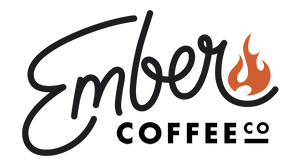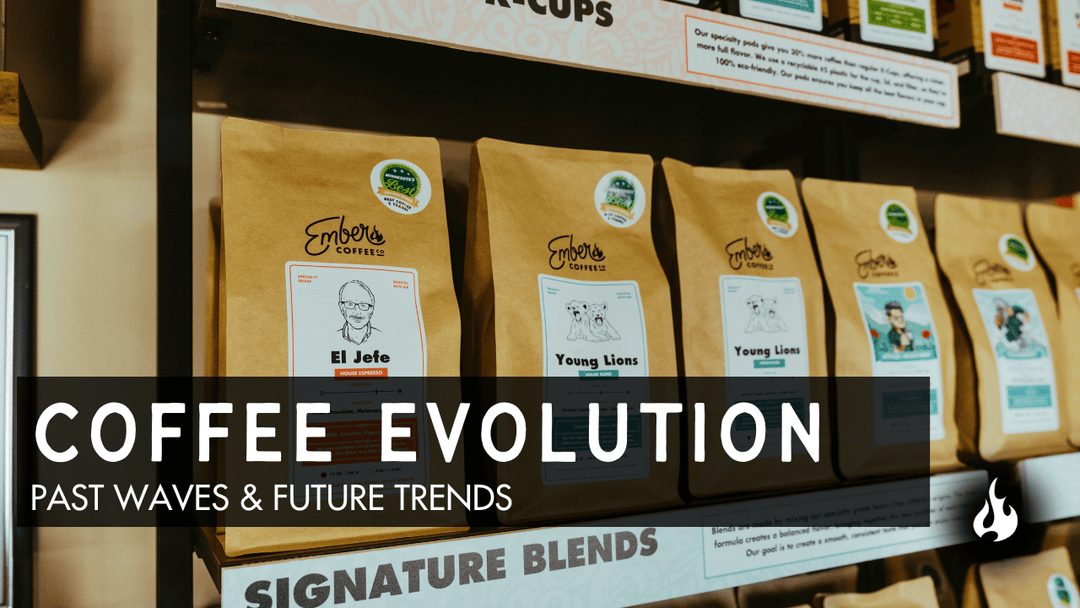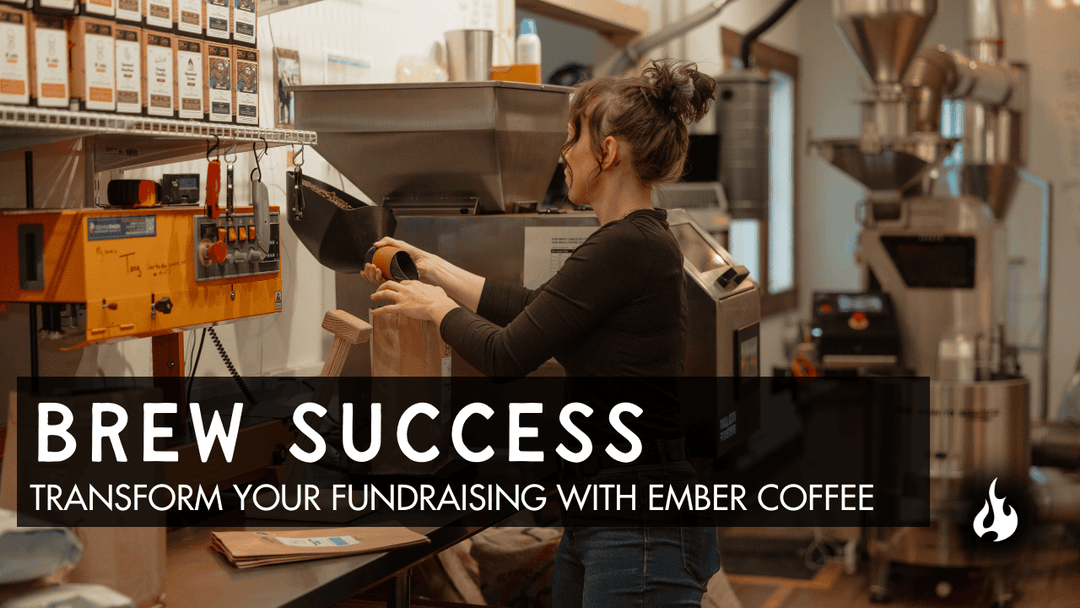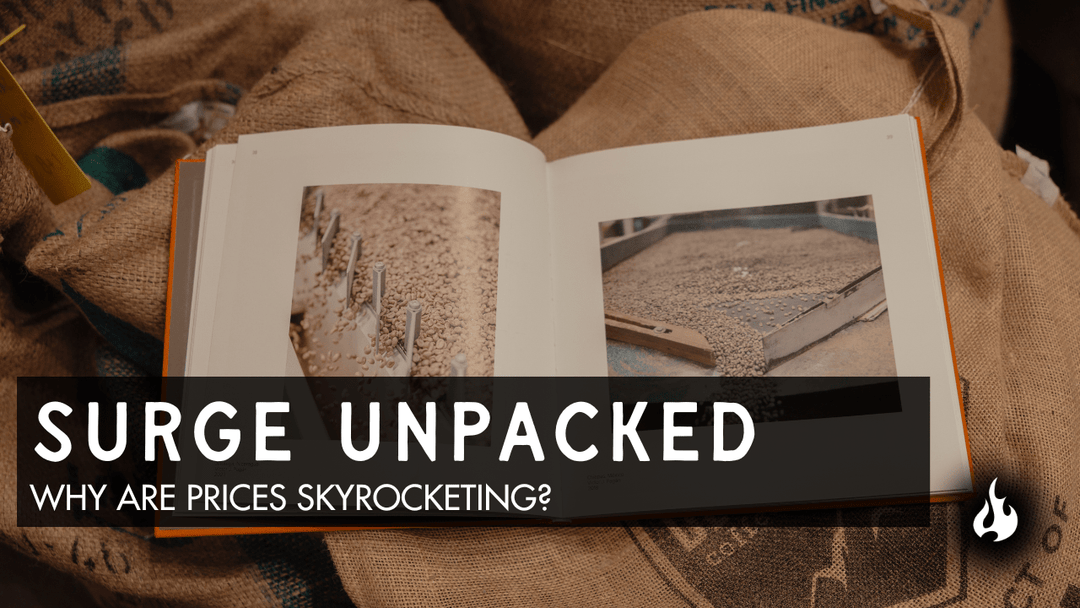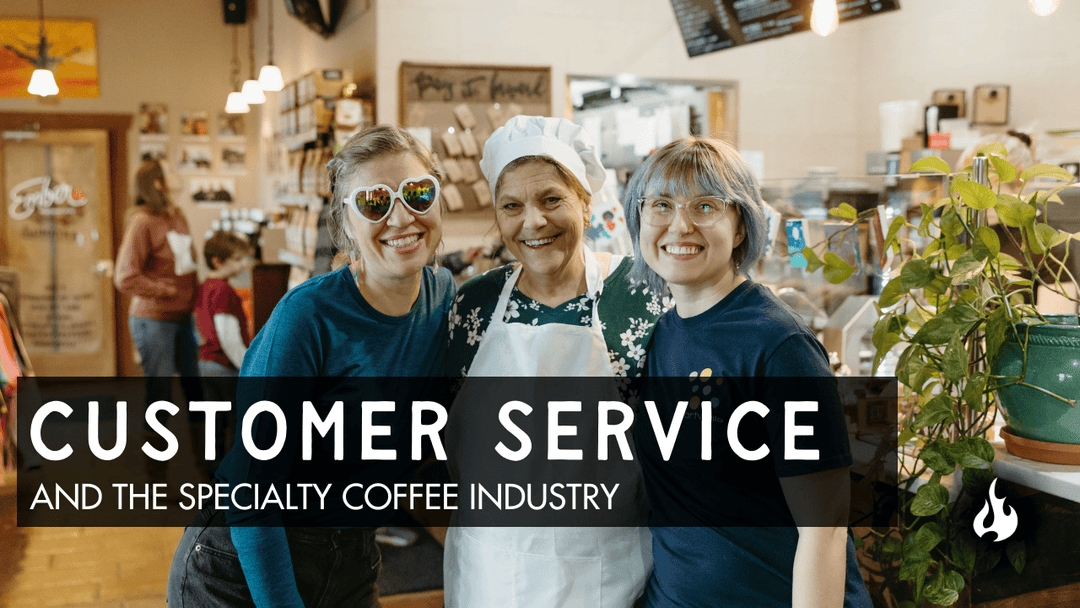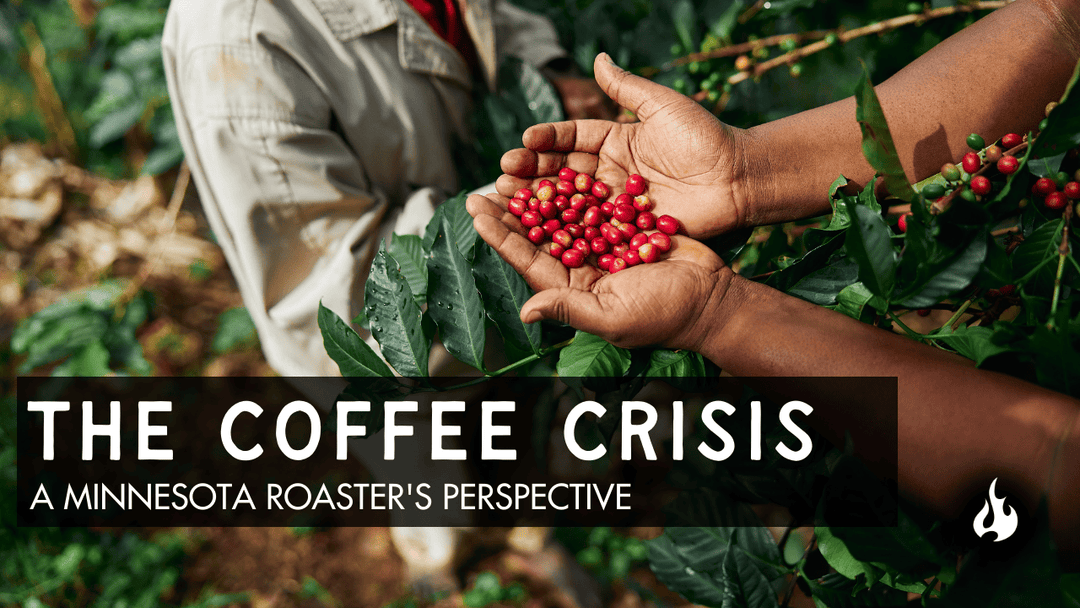Balancing excellent service, happy employees, and profitability is no small feat for coffee shop and small business owners.
Labor costs, often accounting for 25%–30% of revenue, are crucial not only to profitability but also to maintaining customer satisfaction. But when these costs creep higher, businesses face shrinking margins and operational inefficiencies. The stakes are high, yet striking the perfect balance often feels like solving an impossible equation.
However, this problem isn’t unsolvable. With the right strategies, coffee shops and small businesses can overcome these challenges and turn labor management into a competitive advantage. Leveraging data, streamlining operations, and setting realistic benchmarks aren’t just options anymore; they’re the blueprint for long-term success.

Key Challenges in Managing Labor Costs
Running a coffee shop isn’t just about brewing great coffee—it’s about balancing costs, keeping staff happy, and creating an experience that keeps customers coming back. One of the biggest hurdles for any coffee shop owner? Managing labor costs. Inefficiencies in this area can quickly drain profits, yet fixing them requires a deep understanding of the challenges involved. Here’s a closer look at some of the most common pitfalls coffee shop owners face:
1. Overstaffing and Understaffing
Picture this: It’s a quiet Tuesday afternoon, and you have three baristas on shift. They’re chatting behind the counter, their energy wasted during a lull that barely sees a handful of customers. Fast forward to Friday morning—the rush is in full swing, the line is out the door, and you’ve only got two employees scrambling to keep up. Overstaffing during slow periods leaves you paying for idle time, while understaffing during peak hours frustrates customers, overwhelms employees, and often leads to costly mistakes. Finding the right balance here is a constant challenge, but it’s critical to keeping labor costs under control while maintaining a high-quality customer experience.
2. Fluctuating Customer Demand
Coffee shops live and die by the ebb and flow of customer demand. Busy weekday mornings bring in commuters looking for their caffeine fix, but by mid-afternoon, foot traffic can drop off dramatically. Then there’s the unpredictable nature of mid-week slumps or surprise weekend booms, leaving you scrambling to adjust. Optimizing staffing around these peaks and valleys is a delicate juggling act. Get it wrong, and you’re either left paying for too many hours or missing sales opportunities when customers walk away due to long wait times.
3. Low Productivity
Even with the perfect number of staff on shift, your labor costs can spiral out of control if your team isn’t working efficiently. Think about inefficient workflows—staff bumping into each other behind the counter, tasks being duplicated, or excessive downtime when employees aren’t clear on what they should be doing. Add in poorly trained staff who take longer to complete standard tasks, and you’ve got a recipe for wasted labor hours and inflated operating costs.
4. Lack of Data-Driven Decision-Making
Many coffee shop owners rely on gut instinct to make decisions about scheduling and resource allocation. While intuition has its place, it often falls short when it comes to managing labor costs. Without data to guide you—like sales patterns, customer trends, and employee performance metrics—it’s easy to make costly mistakes. Maybe you’ve scheduled too many people on a day that historically sees low traffic or overlooked the fact that a certain employee performs better during morning shifts. Data-driven decision-making removes the guesswork and allows you to make smarter, more efficient choices.
5. Employee Burnout
Let’s face it: improving productivity is a key part of managing labor costs, but there’s a fine line between efficiency and overworking your team. Pushing staff too hard—whether it’s by scheduling them for back-to-back shifts or expecting them to handle rush hours without support—can quickly lead to burnout. Burned-out employees are more likely to quit, leaving you with high turnover rates and the expensive, time-consuming process of recruiting and training replacements. Striking the right balance between productivity and employee well-being requires thoughtful planning and a commitment to supporting your team.
Moving Forward: Turning Challenges into Opportunities
Managing labor costs may feel like a constant battle, but recognizing these key challenges is the first step toward improvement. Each of these pitfalls presents an opportunity to fine-tune your operations, from using data to optimize schedules to investing in staff training and creating workflows that maximize efficiency. Addressing these issues head-on not only helps you save money but also builds a stronger, happier team and delivers a better experience for your customers. With the right strategies in place, you can turn labor management into a strength that drives your coffee shop’s success.

7 Proven Strategies for Optimizing Labor Costs in Your Coffee Shop
Running a coffee shop is no easy feat. Between customer expectations for high-quality brews and the day-to-day operational challenges, managing labor costs effectively can feel like solving a never-ending puzzle. But what if there was a way to balance exceptional service, profitability, and employee satisfaction? Whether you're crafting the best coffee in MN or serving up local roasted coffee from specialty grade coffee brands like Ember, these proven strategies can help reduce costs without sacrificing quality. Let’s dive in.
1. Track and Monitor Labor Cost Percentages
Understanding your labor-to-revenue ratio is the cornerstone of cost optimization. For most coffee shops, the sweet spot falls between 25%–30%, covering wages, taxes, and benefits. If your costs are creeping above 30%, it’s time to make incremental adjustments.
Imagine running a coffee shop during the busy early mornings, serving specialty grade coffee from a brand like Ember. If labor costs are hovering around 40%, you might feel tempted to cut shifts immediately—but sudden changes risk compromising the customer experience. Instead, aim for gradual improvements. For example, reduce labor costs from 40% to 38% over two months by fine-tuning employee schedules.
Tools like payroll software or POS systems with built-in labor tracking can make this process easier. They provide real-time insights into inefficiencies, helping you spot patterns that need correction. Tracking these metrics is like brewing the perfect cup of coffee—it’s all about balance.
2. Use Data-Driven Scheduling
Avoid the guessing game when it comes to staffing. Instead, use sales data to predict when your coffee shop will need more or fewer employees. Picture your mornings: 7–11 AM is when the rush for local roasted coffee peaks. You need a full team of baristas to handle the demand for lattes, espressos, and grab-and-go pastries.
Conversely, afternoons from 2–4 PM might bring a lull. During this downtime, reduce front-of-house staff and focus on tasks like cross-training employees or prepping inventory. Scheduling platforms like Homebase or Deputy can help you dynamically allocate shifts based on traffic patterns, saving time, money, and headaches.
3. Cross-Train Employees
Flexibility is your secret weapon. Cross-training employees to perform multiple roles not only reduces costs but creates a more resilient team. Imagine one of your baristas learning food prep during slower times or front-of-house staff jumping in to tidy up during quiet afternoons.
For a coffee shop specializing in high-quality roasts like Ember coffee, this kind of flexibility ensures that every customer gets their order quickly and accurately. Cross-training also fosters teamwork and morale, reducing the need to hire additional staff and potentially saving up to 20% in labor costs. It’s a win-win for your team and your bottom line.
4. Streamline Your Menu
A wide menu might seem like a great way to attract more customers, but it often leads to longer prep times, higher inventory costs, and the need for specialized labor. Simplifying your menu can have a big impact.
For instance, if a rarely ordered artisan sandwich takes up valuable prep time, consider replacing it with quick-grab pastries that pair perfectly with your specialty grade coffee. A lean menu not only cuts down on labor and waste but also speeds up service, leaving customers impressed by your efficiency. Faster orders mean happier customers—and more time to focus on promoting your best coffee in MN.
5. Incorporate Automation
Automation can revolutionize how your coffee shop operates. By automating repetitive tasks, you free up your team to focus on what matters most: delivering outstanding service.
Automated POS systems can streamline transactions and speed up checkout times, while kitchen display systems (KDS) reduce errors and unnecessary steps in the kitchen. Imagine a busy morning rush—your team is focused on crafting Ember coffee to perfection, and automation reduces operational hiccups, allowing you to serve customers faster. This approach not only saves on labor costs but can boost operational speed by up to 25%.
6. Adapt Business Hours Based on Revenue
Not all hours are created equal. Use sales trends to determine when your coffee shop generates the most revenue—and adjust your hours accordingly.
If sales drop significantly after 5 PM, consider closing at 4 PM to save on unnecessary labor costs. On the flip side, you might notice a spike in demand for Sunday brunch hours, making it worth extending your schedule to cater to weekend crowds. These small, strategic changes ensure you’re using labor where it matters most—without wasting resources during slow periods.
7. Promote On-Demand Sales During Slow Times
Slow periods don’t have to stay slow. Creative promotions can turn quiet afternoons into consistent revenue streams. For example, offer 2-for-1 deals on lattes or discounted specialty drinks made with local roasted coffee.
Apps with loyalty programs can also incentivize customers to visit during off-peak hours. Imagine a loyal customer stopping by for an afternoon treat and discovering your exclusive Ember coffee. By maintaining steady traffic throughout the day, you can sustain revenue even beyond peak hours.

The Bigger Picture of Labor Costs and Profitability
For coffee shop owners, managing labor is much more than just keeping costs under control—it’s about building a thriving ecosystem where your team, your customers, and your profit margins all work in harmony. Picture this: a bustling café where employees are energized, customers are satisfied, and every dollar spent on staffing contributes to the success of the business. That balance is achievable with the right strategies in place.
Staffing isn’t just a numbers game; it’s a critical element of your customer experience. When shifts are understaffed, service slows, customer satisfaction dips, and employees feel overworked and undervalued. On the flip side, overstaffing can drain profits and leave team members without enough to do. The key is finding the sweet spot—a balance that keeps operations efficient, employees motivated, and customers happy.
Quick Takeaways for Coffee Shop Owners:
- Keep a close eye on labor-cost-to-revenue ratios.
Regularly tracking this metric is essential to staying competitive. A healthy ratio ensures you’re not overspending on labor while still delivering excellent service. Think of it as a pulse check for your café’s financial health.
- Invest in automation and cross-training.
Simple tools like automated scheduling or self-serve kiosks can help free up your team’s time for more meaningful customer interactions. Meanwhile, cross-training employees to handle multiple roles creates a more flexible, resilient team that can adapt to busy periods without missing a beat.
- Use real data to align staff schedules with customer patterns.
Every café has its rhythm—early morning coffee rushes, quiet afternoons, and weekend peaks. By analyzing data on customer traffic, you can build smarter schedules that ensure you have the right number of staff at the right times, avoiding both chaos and wasted resources.
- Simplify your menu to boost efficiency.
A complex menu can slow down operations and overwhelm both staff and customers. Reducing menu complexity allows your team to focus on perfecting a few core items, speeding up service while maintaining quality and keeping profits steady.
Ultimately, managing labor effectively is about more than cutting costs—it’s about creating an environment where your team feels empowered, your customers feel cared for, and your bottom line thrives. With thoughtful planning and a focus on efficiency, your coffee shop can be a place where everyone wins—one cup at a time.

Set Your Coffee Shop Up for Success Today
Labor cost management is no longer just about survival; it’s about creating opportunities for growth and sustainability. By putting these strategies into practice, you’ll improve operational efficiency, boost employee morale, and maximize profitability.
Feeling overwhelmed? Don’t worry—we’re here to help. Book a free consultation with one of our experts today and unlock tailored strategies to elevate your coffee shop’s success.
Reach out now—we’re excited to help your business grow.
